Categories
Subjects
Authors
Artists
Venues
Locations
Calendar
Filter
Done
June 13, 2024 – Review
“Expeditionary Botanics”
Hindley Wang
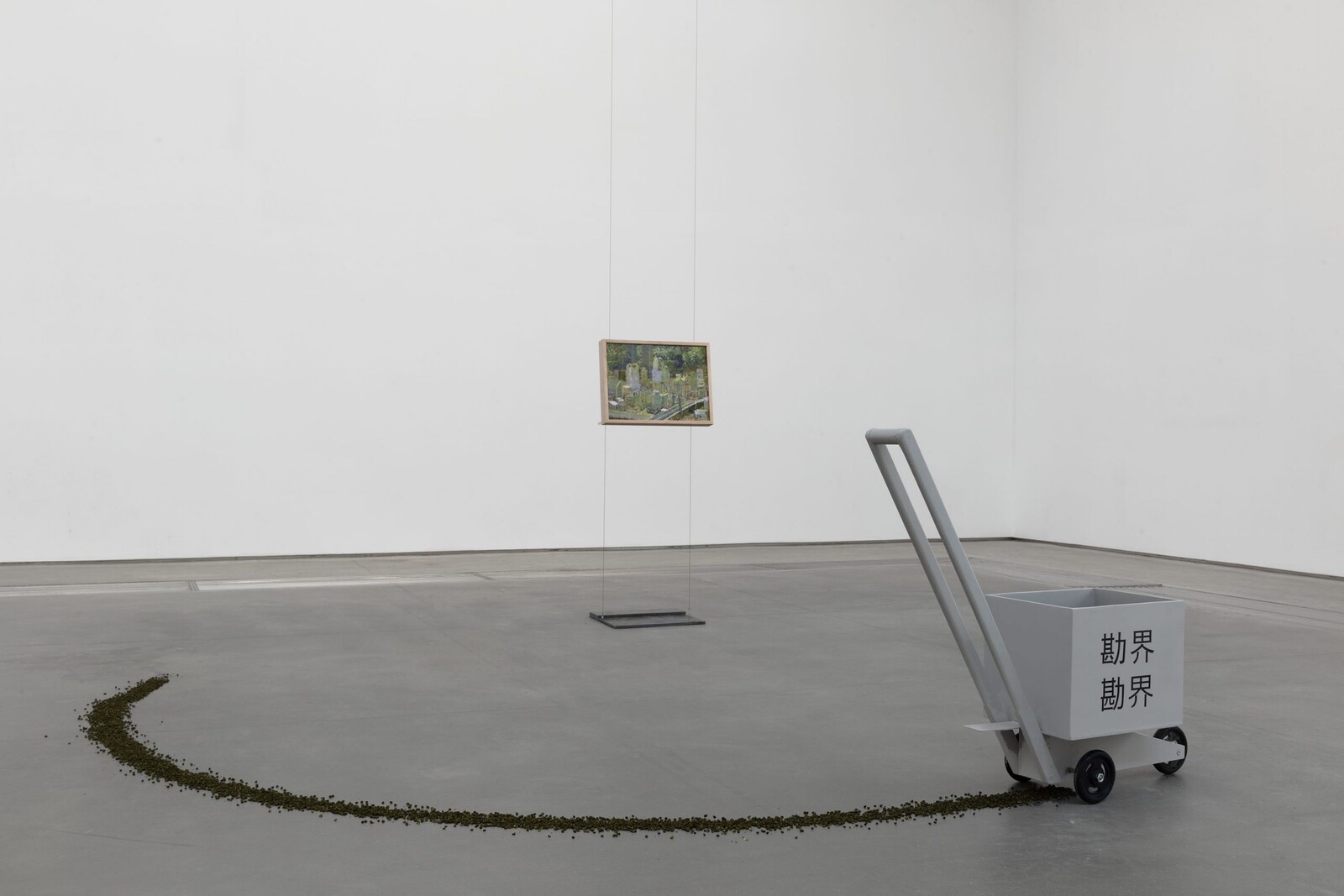
Drawing connections between botany and colonial conquest through the model of the botanical garden, this exhibition reflects on the migration of materials, ideas, and cultures through case studies of eight plant species found in Southern Yunnan: cinchona, horsfieldia, konjac, nutmeg, rhododendron, rubber, tobacco, and turmeric. Artworks are positioned like roadblocks in this large, ex-industrial white cube, so that the visitor must meander around them and, like these migratory species, chart unpredictable courses.
At the entrance, a TV screen supported by two metal poles shows mosquitos drawing blood from human skin, then copulating. Isadora Neves Marques’s hyper-realistic digital animation Aedes aegypti (2017) depicts, as the exhibition text explains, a particular type of mosquito subject to genetic modification by biotechnology company Oxitec. To combat the diffusion of malaria (traditionally treated by quinine derived from cinchona), a “self-limiting” gene is injected into male mosquitos, meaning that their offspring don’t survive into adulthood. An alternative antidote is disclosed on the wall behind the viewer: a botanical illustration of quinine from the Illustrated Manual of Chinese Trees and Shrubs (1937), printed in blue.
A trail of black particles leads across the floor to a metal trolley marked with letters in Mandarin “勘界” (Boundary Survey), repeated …
April 24, 2018 – Review
Liu Wei’s “Shadows”
Ming Lin
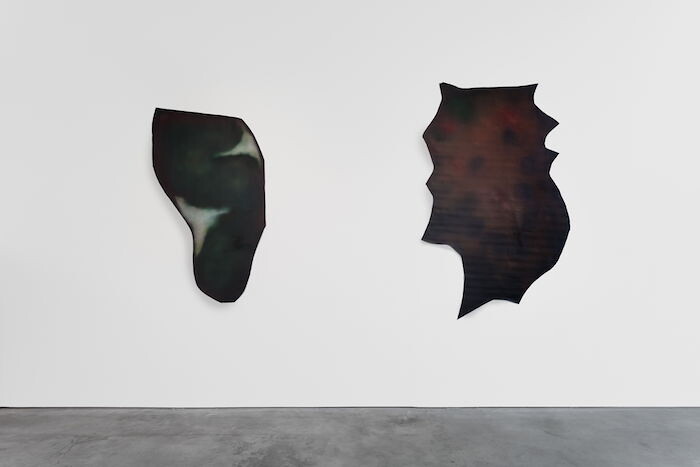
Liu Wei’s “Shadows” is a rigorous exercise in time-space travel. A series of heavily pigmented, depthless shapes hang on the walls of the gallery’s foyer (“Caves,” 2018) serving as oblique entry points into the main exhibition space, where the viewer encounters a cluster of studded and welded metallic structures (Shadows, 2018). Rough edges and hollowed interiors are undergirded by steel supports, revealing these industrial constructs’ two-dimensional, prop-like nature, and giving the impression that one is entering the show from backstage. Emerging on the other side of the installation, it becomes apparent that this is indeed an elaborate set.
Liu employs a method akin to archeology, mining the fragmentary landscapes of Beijing for the collateral, the surplus, and using those found materials for his works. But if an archeologist’s job is to reconstruct the past from extant remains, Liu is instead committed to depicting an ever-evolving, shifting present as ahistorical and perpetually in flux. His endless reconfiguration of materials results in non-narrative tableaus that point to temporal and ideological dissonances rather than attempt any historical continuity.
Working in a variety of mediums, including video, sculpture, painting, installation, and performance, Liu’s practice is notable for lacking any consistent aesthetic, and his projects are unified …
February 6, 2015 – Review
“Unlived by What is Seen”
Venus Lau
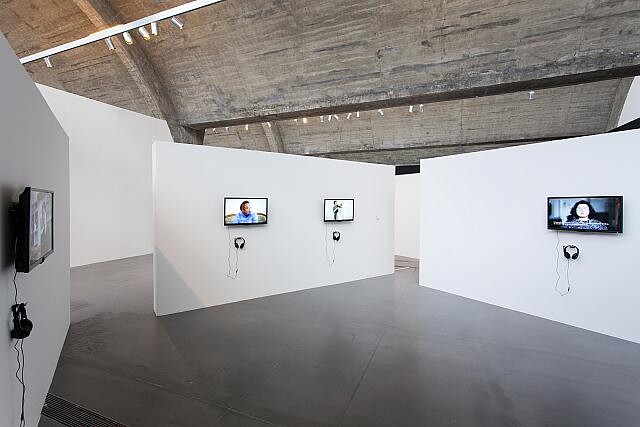
“Unlived by What is Seen” showcases the work of 34 artists, collectives, and organizations, spanning across three galleries (Galleria Continua, Pace Beijing and Tang Contemporary) located in Beijing’s 798 Art district. In contrast to its elusive English version, the show title reads straightforwardly in Chinese: Bu Zai Tu Xiang Zhong Xing Dong, literally meaning “Not Acting Within Images.”
Organized by independent curator Cui Cancan and artist duo Sun Yuan and Peng Yu, this project amounts to a vague attack on the image and visual production, even as it ends up as a vast pool of images, particularly of the moving sort, with a total viewing time of around 80 hours—made up mostly of interviews with artists. Here the image is belittled as the residue of life, although the curators emphasize the non-archival dimension of the exhibition. Writer Eileen Chang refers to the (photographic) image as the empty shells left over when the nuts inside have been consumed. Likewise, here visitors are presented with “nuts”, Wanxiang (January–June 1944). Translation the author’s own.] like Cai Dongdong, Hu Yinping, and Jinag Bo’s Chang An Street Rally (2014), a video documenting a furtive race along the east-west axis of Beijing, and artist collective First Floor’s …
April 25, 2014 – Review
“The Un-Officials | Art Before 85”
Karen Archey
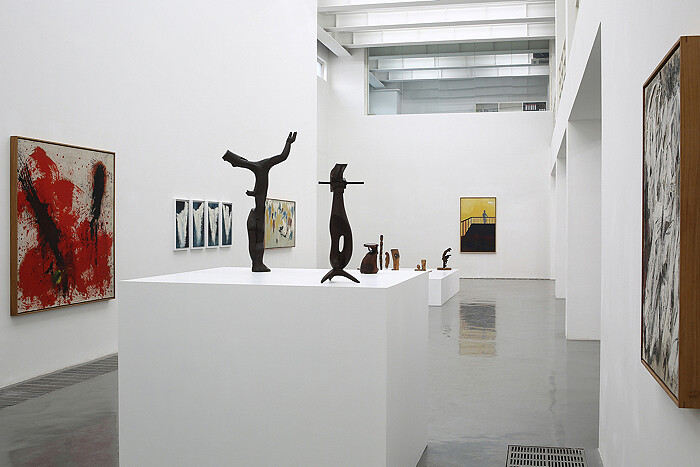
When was the last time you walked into a painting exhibition at a commercial gallery and saw something truly politically radical? The answer for many in the West is likely “rarely, if ever,” especially if we’re referring to West Chelsea or London’s Mayfair. “The Un-Officials | Art Before 85” highlights the practice of artists working in post-Reform China in what appear to be conservative, pastiche styles. These artists were active amidst the denouement of the prohibitive Cultural Revolution, as early as 1973, and through the period of détente between intellectuals and political officials through 1985, marked by a moderately less authoritarian Chinese government led by Deng Xiaoping after Chairman Mao’s death in 1976.
“The Un-Officials” focuses on the efforts of two groups: the Wuming Painting Society (wuming means “no name,” or “anonymous”), founded in 1973, and the Xingxing (“Stars”) Group, founded in 1979. The self-taught artists comprising these two groups rejected state-sanctioned Socialist Realism, instead teaching themselves how to paint in banned western styles while attempting to dodge government surveillance; many of these groups’ members were jailed for insurrection or sent to the countryside for “reeducation.” The styles these artists painted in, often anachronistic, ranged from Action Painting to American Abstract …
May 2, 2013 – Review
“I’m Not Involved in Aesthetic Progress: A Rethinking of Performance”
Edward Sanderson
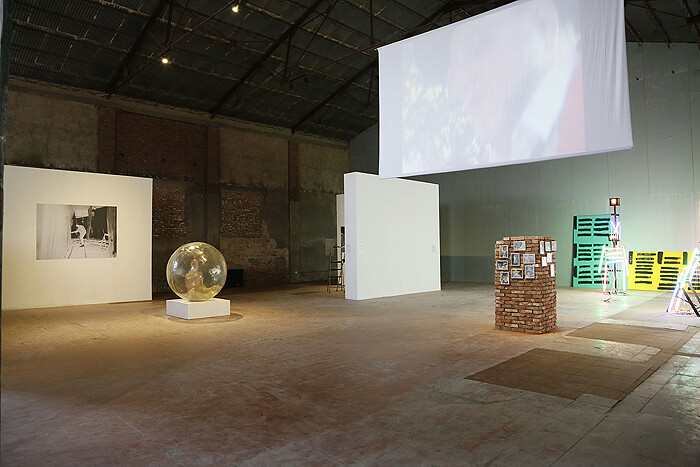
In this inaugural exhibition in Star Gallery’s new Beijing space, curator Su Wei addresses certain perceived limitations in the discourse surrounding Chinese performance art. Drawing on the work of eight artists, the presentation avoids “formulated mechanisms,” Su writes, to specifically address works “irreducible to any classification within the historical process of aesthetics.” Su proposes that this can be partly accomplished by more fully addressing the original contexts of the performances: “It is impossible to [remove] the work of the artist from its site.”
Artists Ma Liuming, Zhu Ming, and Xing Danwen were part of the “East Village” community in Beijing in the early 1990s, known for body-art practices (i.e., Ma Liuming cooking naked in his studio’s courtyard) that would eventually lead to the scene being prematurely “shut down” by the police. In this show Ma is represented by documentation of his performance during a visit by British artists Gilbert & George to his studio in 1993 in which he stripped off his shirt and cut into a bag of red ink hidden in the ceiling, which poured down over his body like blood. Video documentation of a performance at the Istanbul Biennale from 2001 is also on view …
April 10, 2013 – Review
Brendan Earley’s “In the Midnight City”
Iona Whittaker
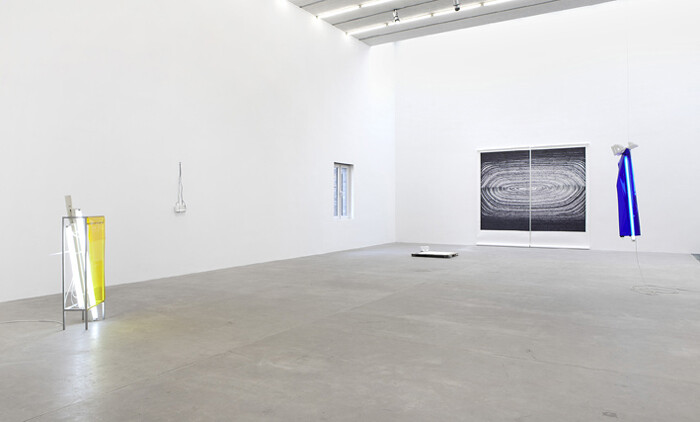
It is an inexorable fact that every work of art is a response in some form. Irish artist Brendan Earley has created works in response to Beijing, where he was an artist-in-residence at Galerie Urs Meile last year. One might hazard the suggestion that Beijing is a city that is particularly difficult to elucidate. Its traffic, human and mechanical; layers of habitation—frequently temporary but sheltered from the uncomfortable climate by rapid-set concrete; endless breakage, dirt, and repair; consumption and competition; fragments sculpted into language and undivided skies of blue or grey revolving between day and neon-infected night above altering horizons. It is a city that incites one to operate rather than contemplate.
This might be one description of the place Earley entered with the express awareness that cities penetrate the consciousness of their inhabitants until they themselves are assimilated into the urban fabric as “fractional embodiments” of it. In what is a notably cogent exhibition text, he acknowledges a shift by which humans no longer adapt to their habitat, but change it to suit to themselves. Yet in Beijing, the environment is such that people are forced to adapt: these artworks reflect on that reconciliation, standing somewhat tentatively amidst an accelerated …
May 25, 2012 – Review
Yang Fudong’s “Close to the Sea & the Revival of the Snake”
David Spalding
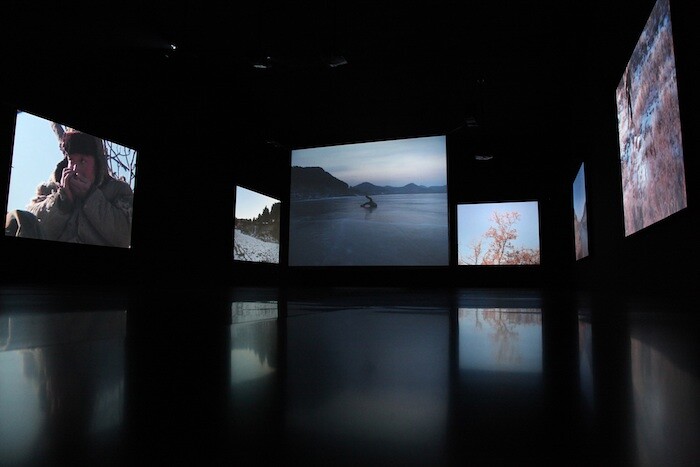
In the mannered world evoked in the best-known films and video installations of Yang Fudong, people don’t speak much, perhaps because they have nothing to say. Instead, they preen and posture, as if posing for the still photographs they also appear in. A moody, attractive bunch, they tend to dress up, get together, and mull things over in silence: nonetheless, one believes they have a lot on their minds. In their evening gowns and well-cut suits, they glide effortlessly through a contemporary world of penthouse apartments and cocktail parties and an imaginary, gilded era of interwar Shanghai. Yang’s first solo show in Beijing brings together two large-scale installations that form the exhibition’s core, as well as a selection of black-and-white photographs related to Yang’s five-part film cycle Seven Intellectuals in a Bamboo Forest (2003–2007). In doing so, the exhibition highlights Yang’s tendency to favor highly stylized atmospherics over conventional narrative structures, revealing both the strengths and weaknesses of this approach when applied to multi-channel video works.
Visitors entering ARTMIA Gallery (located just opposite ShanghART’s Beijing space) first pass through a dim anteroom, empty except for a series of paragraphs decorating its dark walls at equidistant intervals. Bringing to mind a wayward …
January 7, 2012 – Review
Hong Hao’s “AS IT IS”
Pauline J. Yao
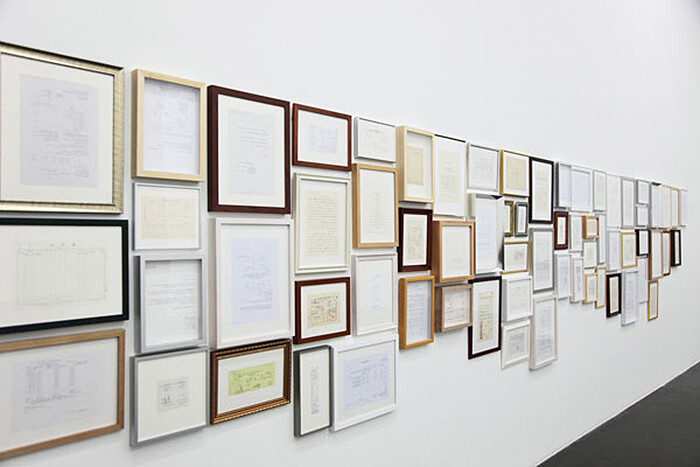
There is something immensely gratifying about seeing an artist produce a roomful of artworks out of meticulously collected miscellaneous receipts, letters, forms, and paper ephemera from daily life. Perhaps this is due to the familiarity of the materials, or the fact that most of us take comfort in knowing that we lack the pathological tendencies that have led to such scrupulously hoarding, selecting, and organizing of all those original items in the first place. In Hong Hao’s latest undertaking “As It Is,” the obsessive impulse towards collecting is tempered by yet another—the urge to copy. Along with collecting, Hong has undertaken the immense task of tracing each miniscule word and letter, stroke by stroke in pencil on the reverse side of the paper. Copying is familiar territory for the artist, earlier bodies of works having involved traced magazine pages onto blank pieces of paper and self-produced fake biennial catalogues; one can see the links also to an earlier work called Invitation (1997), in which he and co-collaborator Yan Lei famously mimicked a documenta X invitation letter and sent it around to Chinese artists under false pretenses. But if those works edge towards the satirical, “As It Is” adheres to a …
November 8, 2011 – Review
Sterling Ruby’s "Vampire"
David Spalding
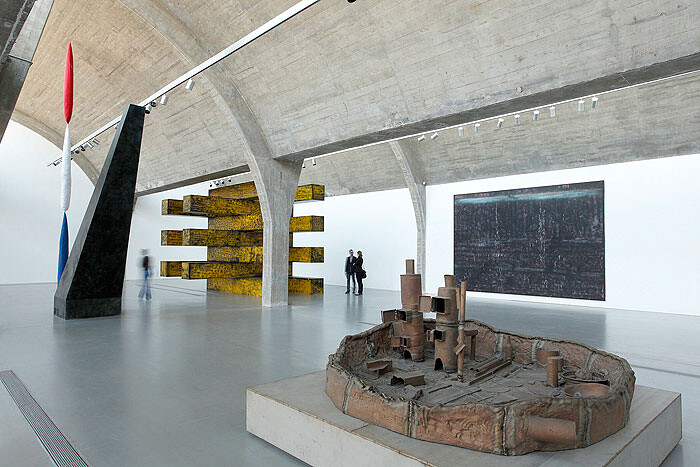
Caught in that dark crawlspace between the living and the dead, hounded by a destructive, unending hunger and burdened with the need to indoctrinate: this is today’s American empire as it appears in “Vampire,” Sterling Ruby’s exhibition of new and recent work at The Pace Gallery, Beijing. Ruby has always needed to tag and topple monuments dedicated to the old order. For his 2008 exhibition SUPERMAX at the Geffen Contemporary, MOCA, Los Angeles, Ruby scratched, scarred, and defiled Minimalist-derived sculptural forms until they confessed their sins, creating a claustrophobic installation that forged links between 1960s American Minimalism and incarceration. For his first solo show in China, Ruby returns to the period’s obdurate, block-headed muteness, finding an unspoken desire for power in the geometric, reductive, and “objective” approaches made famous by Minimalists and the critics that championed them. Here Ruby reinterprets these forms, along with historically contiguous modes of painting and sculpture, dragging the whole lot squarely into a present marked by desperate consumption, global war, and economic collapse.
Ruby has a flair for the theatrical. With its star-spangled smile and dripping fangs, the soft sculpture Double Vampire 6 (unless otherwise stated, all works 2011) evokes the Rolling Stones’s lascivious tongue-and-lips logo, …
August 9, 2010 – Review
"MadeIn: Don’t Hang Your Faith on the Wall," Long March Space, Beijing
Colin Chinnery
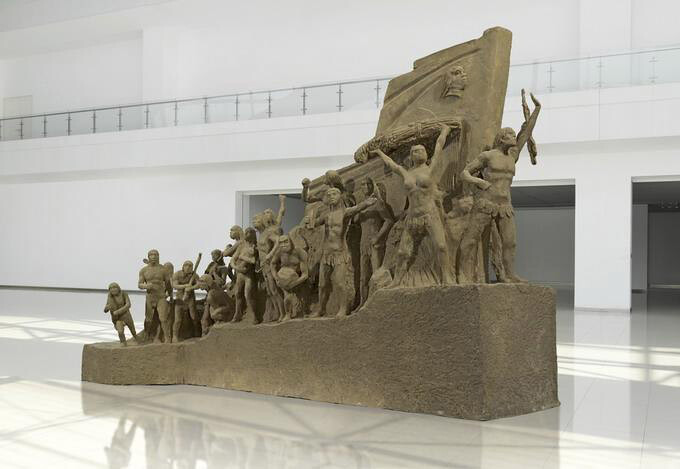
MadeIn is a cultural production company founded a year ago by the Chinese experimental artist Xu Zhen. He founded the company in an attempt to define and combine his various outputs beyond his own artwork, such as the non-profit space BizArt, China’s leading online contemporary art forum Art-Ba-Ba (which translates as “art daddy” or “art shit” depending on the tones of “ba-ba”), and his curatorial work. By branding everything he does like some Hollywood studio, he hides his own identity behind a corporate façade. But we still know it’s him behind the mask. His corporate identity has added an extra layer of signification to his work: it’s a matter of representation, of how we signify what we see.
The exhibition “Don’t Hang Your Faith on the Wall” is an extension of this fundamental attitude towards representation. The show consists of installation, sculpture, and two-dimensional works each with a title taken from philosophy or the media. The original works, however, were not shown. Instead, the works were photographed and these photographs are presented as the ultimate art objects of the show. The exhibition contributes to the discussion of what constitutes an artwork as examined by Walter Benjamin in “The Work of Art …
July 19, 2010 – Review
Liang Shuo’s "Fit" at C5 Gallery, Beijing
Pauline J. Yao
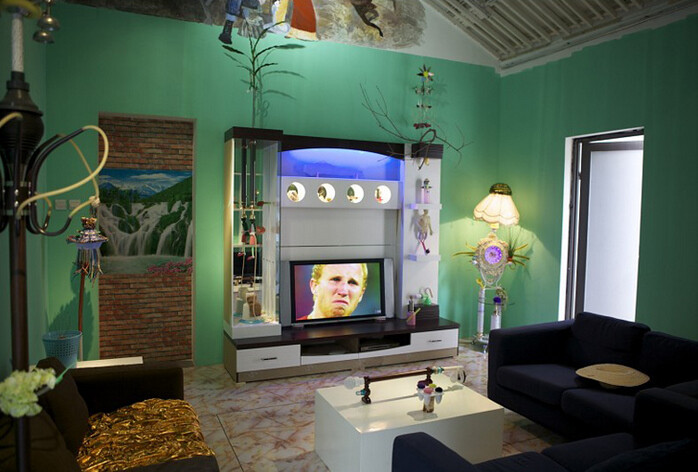
Liang Shuo’s most recent solo showing “Fei Te” (“Fit”) involves a bit of wordplay. The Chinese words “fei” (expense) and “te”(special) register meaning individually but their combination does not, except as a phonetic match for the English word “fit.” The same might be said about Liang’s current installation, a sprawling effort chock-a-block with myriad sponges, plastic foliage, clocks, broom handles, mop heads, clothespins, lampshades, curtain rods, plungers, hangers, cheap laminate surfaces, and mattresses. Taken on their own, these everyday objects may have practical meaning and use but after being unceremoniously combined, lumped, fastened or jammed together, their functionality is lost. What remains is the unwavering presence of their shape, color, texture, and form.
Containing objects copiously collected over the past two years and assembled on-site over a month, “Fit” is a monument to the plastic, gaudy, and jerry-rigged aesthetic that permeates contemporary China. There is no apparent logic to the circular layout of the five rooms—which begins with an ad-hoc shower-fountain walled-in by plastic covered furniture and upright pieces of cut flooring and proceeds to a garish mint-colored living room set-up; followed by a room of freestanding sculptures, a stacked assemblage of desks, tables and cabinets with piped in classical music; …
Load more